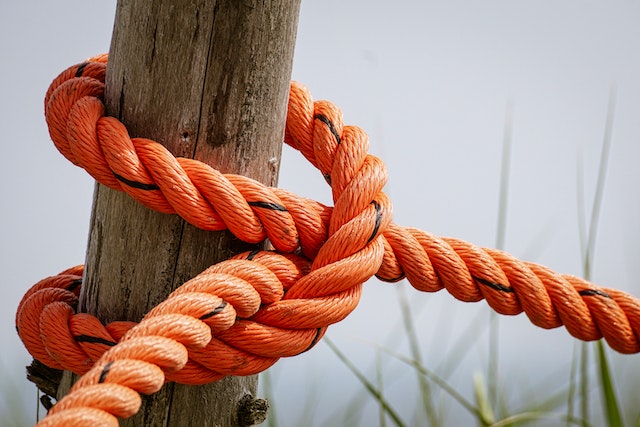
How long have humans been using rope? Prehistoric man started using rope over 50,000 years ago.
Rope is an incredibly important invention in the history of humankind. We might not think about it now because we have nails, screws, Velcro, wood, solder, and a hundred other ways to keep things together, but prehistoric people only had rope. Everything that they made, pretty much, used rope in some way. Without rope, it is safe to say that we wouldn’t be where we are today. So, how long have humans been using rope?
Early people would have used natural plant fibers as ropes, but those are not technically rope. A rope is a length of strong cord made by twisting together strands of a material to make it stronger than the material on its own. The natural fibers in one piece of material are too short and not strong enough to withstand all the forces a rope can withstand. They have to be twisted with other fibers, so that they support and hold each other in place. At some point, prehistoric people started to braid and twist these fibers together to make them stronger, and that was rope. Nobody knows exactly when this process started, but in 2020, a tiny piece of braided rope was found connected to a stone tool. This piece is 6.8 mm long and has been dated to 50,000 years ago. It is a small fraction of a braided bark rope and shows that Neanderthals were able to make rope.
A 40,000-year-old tool found in Hohle Fels, a cave in Germany, gives even more proof that prehistoric people were able to make and use rope. The tool is carved out of a piece of mammoth tusk, and it looks like a musical instrument. It has four holes drilled into it and the holes have grooves next to them. Archaeologists have worked out that this was a tool for making rope. Stone-age people would feed four different plant fibers through each of the holes. When one person holds the fibers and another person twists the rope making tool, they could weave a strong rope. Modern experiments have shown that it is very effective. Other types of this tool, made from reindeer antlers, were found in England.
The Egyptians were the first people to invent special rope making tools about 6,000 years ago and they used papyrus fibers. The tool they invented is called a rope spinner. They used six tools altogether to make rope. A spike used to splice the strands and to put between the strands when they are being woven. A mallet to beat the papyrus to make it softer. Two rope spinners, which go over the fibers and spin them together. A second smaller spike and a knife. With these six tools and three people, they could make hundreds of meters of rope. All of the Egyptian building marvels that we can still see today would not have been constructed if the Egyptians hadn’t had access to such strong rope.
In Europe, up until the end of the Industrial Revolution, rope was made in a very long building called a ropewalk. Many of these buildings were over 300 meters long and fairly narrow. They were also dangerous because the fibers from the ropes were liable to combust. It took up to 200 men to make a rope with a circumference of 51 cm in a ropewalk. The strands of the rope are laid out on the floor. At one end of the ropewalk is the spinner that twists the rope and there is a guide in the middle. Many of the ropes made in ropewalks were for ships. They were made from smaller ropes that were twisted together. After the smaller ropes had been spun, they were tarred to keep them waterproof, then stretched out along the ropewalk, before being spun into a rope. Sailing ships obviously needed a lot of rope and the HMS Victory, launched in 1765, used 50 km of rope.
In the Industrial Revolution, steam-powered machines replaced the people, but ropewalks were still used for a few years. The materials used in rope making changed because most of the rope was used on ships and it stretched or shrank when it got wet. Manila, which is a type of hemp, because it is strong and doesn’t change when it’s wet. As technology improved, ropewalks became a thing of the past and ropes were made by rapidly spinning machines.
These days, rope is made extremely quickly. Raw fibers are fed into the machine and lubricated with natural oil. They are twisted into strands of yarn. Depending on the thickness of the rope, many strands of yarn are spun into cords, then these cords are passed into another spinner where they are turned into rope. All of this happens in the same machine. And that is what I learned today.
Sources
http://www.madehow.com/Volume-2/Rope.html
https://solar.lowtechmagazine.com/2010/06/lost-knowledge-ropes-and-knots.html
https://www.streetdirectory.com/travel_guide/31273/home_accessories/history_of_the_rope.html
https://ropeandcord.com/guides-ideas/the-invention-of-rope/
https://en.wikipedia.org/wiki/Ropewalk
https://en.wikipedia.org/wiki/Rope
